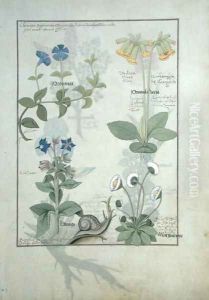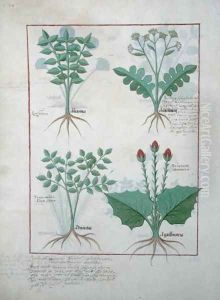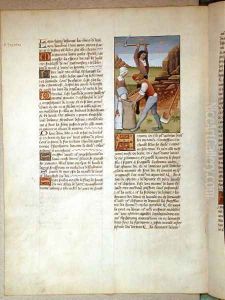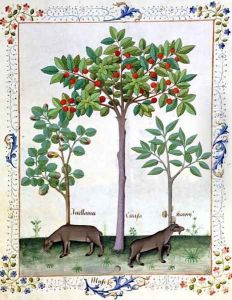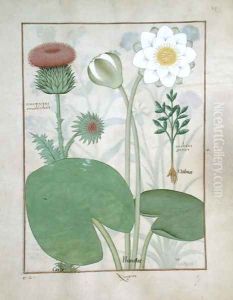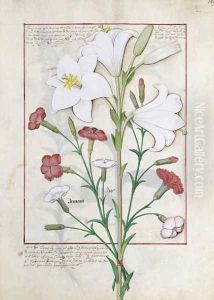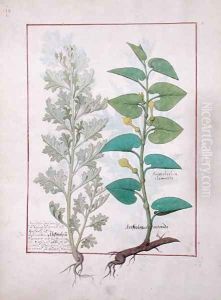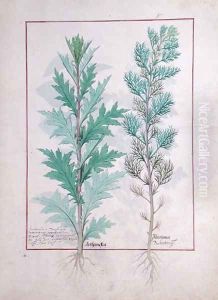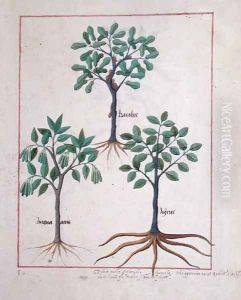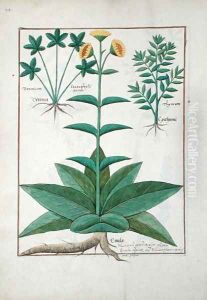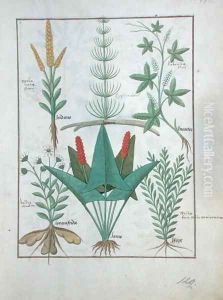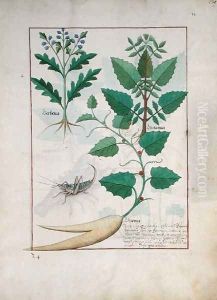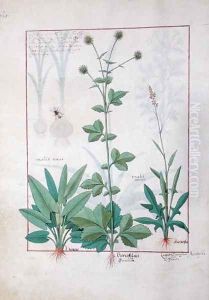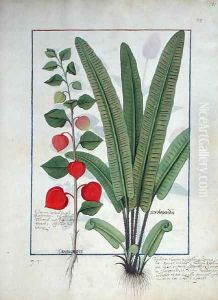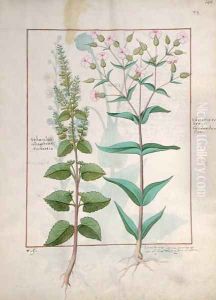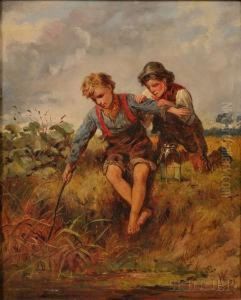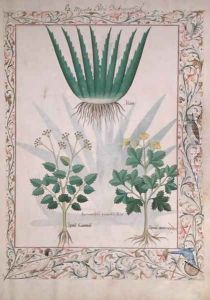





Aloe and Apio, illustration from The Book of Simple Medicines by Matthaeus Platearius d.c.1161 c.1470
-
About Reproduction
Discover the allure of art with our faithful reproduction of "Aloe and Apio, illustration from The Book of Simple Medicines by Matthaeus Platearius d.c.1161 c.1470", originally brought to life by the talented Robinet Testard. Unlike posters or prints, our hand-painted oil painting breathes an unique sense of depth and texture into your space. Every detail, every stroke, and every texture is meticulously recreated, paying the perfect homage to Robinet Testard and his artistic vision.
Owning this piece is more than just decoration - it's a statement of your refined taste in art. Let the vibrant colors and intricate details of this replica serve as a daily reminder of the beauty in our world. Elevate your decor and appreciate the richness of art with our replica of this masterpiece.
-
Painting Description
The illustration of Aloe and Apio from "The Book of Simple Medicines" is a notable work attributed to Robinet Testard, a French illuminator active during the late 15th century. This particular illustration is part of a manuscript that is believed to have been created around 1470, drawing upon the earlier medical text by Matthaeus Platearius, a physician from the 12th century. Platearius' original work, known as "Liber de Simplici Medicina" or "The Book of Simple Medicines," was a comprehensive guide to medicinal plants and their uses, reflecting the medical knowledge of the medieval period.
Robinet Testard's illustration exemplifies the intricate and detailed style characteristic of late medieval manuscript illumination. Testard, who was active in the court of Charles of Angoulême, is known for his vibrant and meticulous artwork, which often included botanical illustrations, religious scenes, and courtly life. His work on "The Book of Simple Medicines" showcases his ability to blend scientific accuracy with artistic beauty, providing a visual complement to the text's descriptions of medicinal plants.
The depiction of Aloe and Apio (parsley) in this illustration is not only artistically significant but also serves as an important historical document. Aloe, known for its soothing and healing properties, and Apio, commonly used for its digestive benefits, were both essential components of medieval herbal medicine. The illustration likely served as a practical reference for physicians and apothecaries of the time, aiding in the identification and application of these plants in medical treatments.
Testard's work on this manuscript highlights the intersection of art and science during the medieval period, illustrating how botanical knowledge was disseminated through visually engaging and scientifically informative means. The preservation of such manuscripts provides valuable insights into the medical practices and artistic achievements of the past, underscoring the enduring legacy of both Matthaeus Platearius and Robinet Testard in the history of medicine and art.
-
Lead Time & Shipping
When you order this oil painting replica, it typically takes 2-3 weeks to paint. If the artwork is more complex, it might need a little more time to ensure the best quality. Once it's ready, we'll send you a photo for your approval. After you give the green light, we'll ship it to you for free.
-
Return & Refund
We believe in the quality of our hand-painted oil painting reproductions, and your satisfaction is our priority. If for any reason, you are not completely satisfied with your purchase, we offer a 45-day return policy. You can return your artwork within 45 days of receipt and receive a full refund. Please note that the artwork must be returned in the original packaging and in the same condition as it was received.





